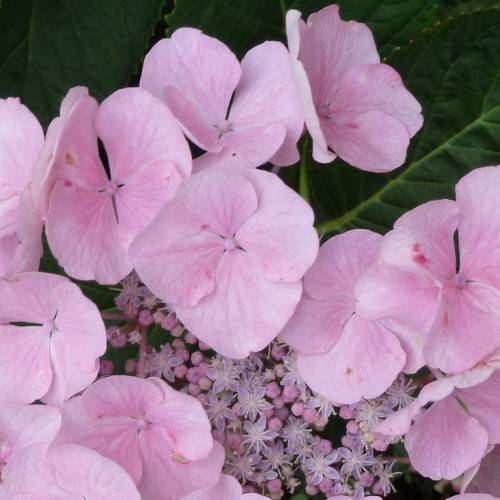
bigleaf hydrangea
Hydrangea macrophylla 'Homigo'
Cycle:
Perennial
Watering:
Average
Hardiness Zone:
6 - 9
Flowers:
Flowers In Summer
Sun:
Deep shade, Filtered shade, Part sun/part shade
Soil:
Acidic, Alkaline, Well-drained
Fruits:
Fruits Ready In Fall
Leaf:
Yes
Growth Rate:
High
Maintenance:
Moderate
Care Level:
Medium
watering
Water your Hydrangea macrophylla 'Homigo' deeply twice a week during the spring and summer growing season. Aim to keep the soil evenly moist, but avoid saturating the ground or allowing it to become water-logged. In the winter, reduce watering to once a month, allowing the soil to almost dry out between waterings. Avoid splashing water onto the leaves of your hydrangea, as this can increase the chances of leaf diseases. If possible, use rainwater or filtered water to provide gentle hydration for your plant.
sunlight
Bigleaf hydrangeas prefer partial shade to full sun. When planted in areas of partial shade, they will require at least 4 to 6 hours of direct sunlight per day. When planted in full sun, they require between 8 and 10 hours of sunshine per day. When growing Hydrangea macrophylla 'Homigo', it is important to ensure that it is getting enough sunlight for optimal growth. Too little or too much sunlight can cause the leaves to turn yellow and the stems to become stunted and thin. In general, for best results, place Bigleaf Hydrangeas in locations that provide morning sun and afternoon shade. This will ensure that the plants receive plenty of sunlight without being exposed to the harsh afternoon sun. Mature plants may also benefit from a light afternoon shade, as this will help to protect them from excessive heat and prolonged drought. In hotter regions, some afternoon shade can be beneficial for improving both growth and blooming.
pruning
Bigleaf hydrangeas (Hydrangea macrophylla 'Homigo') should be pruned in the early spring, just before new growth begins. Aim for the first few weeks of March - pruning too early or too late can stunt the plant's growth or strain it unnecessarily. The goal of pruning should be to open up the center of the shrub to improve air circulation and light penetration. When cutting, use bypass pruners and make cuts at a 45-degree angle just above an outward-facing bud. All dead, diseased, and damaged branches should be removed. Pruning can be done to about ⅓ of the total plant height. In addition, if your plant is growing too big, you may need to thin out some of the oldest stems, removing them at the base.
